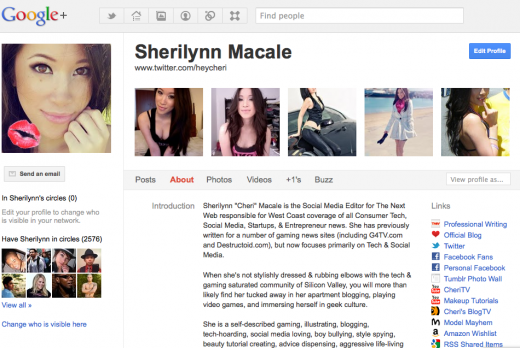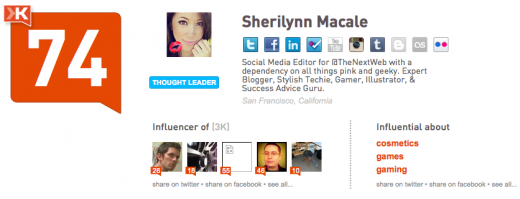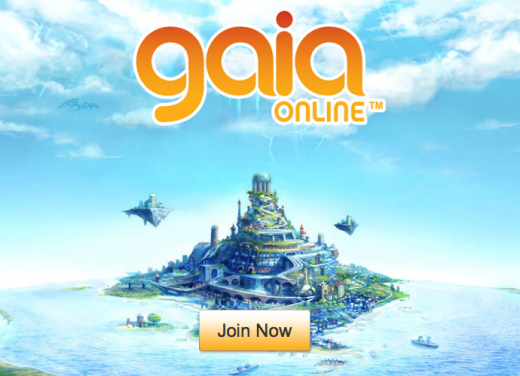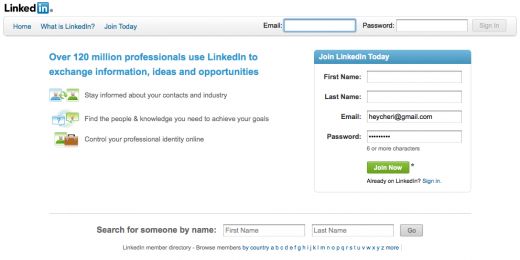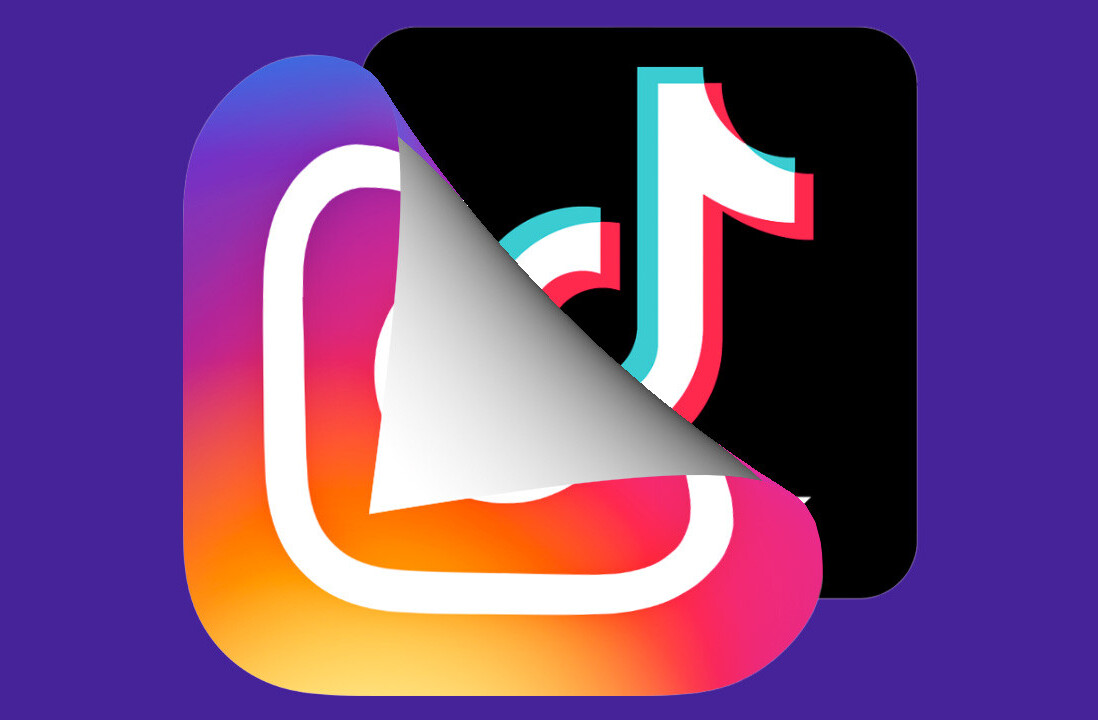
Managing and growing any personal brand online can be a difficult task. For those of us looking to curate a respectable following, we simply can’t afford to miss any stops as nowadays, our online reputation means almost everything. Luckily, there are several tools we can use online that make this process easy and, in some instances, fun.
In a few case studies, personal brands that founded their online presence through small, community-based sites were then able to use the connections formed from those services in conjunction with several tools to further promote themselves on the web.
In an attempt to uncover which tools exactly have helped personal brands reach the heights that they have, we’ve curated a helpful list of services and online tools to make managing your web reputation just a bit easier.
1. Facebook Pages
While many of us are using Facebook simply as a tool to connect with old friends and perhaps long-distance relatives that we’ve been meaning to get in touch with, those of us keen on being a bit more socially “present” have tapped into Facebook’s ability to grow and manage our personal brands online are creating Fan Pages.
Pages on Facebook are a great way to introduce fans and followers to our online “presence” without adding them as actual friends or providing them with ammo against our online personalities on our much-more-personal profile pages.
Facebook Pages give brands another outlet to provide a relatable “voice” for their target audience. In this way, brands are better able to interact with their following on a more intimate or personal level that engages their fans and makes them feel more involved.
2. Twitter Profiles
 We wouldn’t forget Twitter, of course. Twitter is popularly known as a real-time online communication channel that provides both live and rapid-fire feedback as well as facilitates the exchange of ideas quickly over a single platform.
We wouldn’t forget Twitter, of course. Twitter is popularly known as a real-time online communication channel that provides both live and rapid-fire feedback as well as facilitates the exchange of ideas quickly over a single platform.
Through Twitter, brands like the cast of Jersey Shore, for example, are already using the service to communicate with their target audience and even troubleshoot issues that fans and followers seem to be having with their personality. In this way, followers can feel both heard and taken care of in, again, a more intimate setting.
Public Figures are also using Twitter to represent their reach online, where their amount of followers is indicative to how loyal potential consumers are and how willing they are to participate in what a particular brand has to say. In this way, sponsors and advertisers are more likely to reach out to brands with larger followings on Twitter who understand how to engage their audience than they are to those with small Twitter followings.
3. Google+ Profiles
Though relatively new, Google Plus pages are already becoming an excellent resource for personal brands and public figures to provide a gateway to their various presences online.
Some consider the service a step above Facebook in that not only can a brand deliver meaningful and customized text content through the platform, but personalities can also link directly from their “About” sections to their officially linked brand pages elsewhere on the web.
Much like Twitter and Facebook, personal brands can use this platform to further engage their audience or network with others who have similar interests, as the platform allows users to both follow and track brands without needing to be “followed back”, while providing further privacy setting customization to limit what brands let certain “Circles” of followers see.
4. Gateway and Splash Pages
Much like Google+’s ability to link between several of a brand’s affiliated profiles online, gateway pages like About.me and Flavors.me provide a gorgeous and user-friendly interface that displays a brief blurb about your personal brand in a way that is aesthetically appealing.
Many Twitter users (like Veronica Belmont, Host of Tekzilla) are even linking their About.me splash pages directly on their profile to point towards their various personal appearances across the web. In this way, search engines can better lead users directly to the proper pages where they can find out more about your brand, while also doing a better job of eliminating would-be imposters online.
In fact, .me domains are already popular online (see our EIC’s profile, Zee.me) so it might be a good idea to snatch up yours now before it gets taken by someone else eager to profit.
5. Niche-Based Social Sites
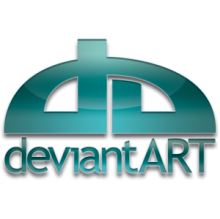 Popular services like deviantART for creative types and ModelMayhem for models and photographers provide social platforms where personal brands can both meet and interact with like-minded users.
Popular services like deviantART for creative types and ModelMayhem for models and photographers provide social platforms where personal brands can both meet and interact with like-minded users.
Whatever your profession or focus, these niche-based social sites are an easy way for you to gather alongside your target audience and market yourself to a potential following that actually cares about what you have to say. The higher concentration of those with similar interests on a niche-based social platform takes the struggle out of building bridges between content consumers and brands.
Dribbble is another “show and tell” service for creative types that provides a clean interface for users to display their work in a gallery of sorts for other artists. NaNoWriMo is the official site for National Novel Writing Month that hopes to encourage its community to participate in thirty days and nights of “literary abandon.”
6. Social Influence Analytics
Sites that claim to score your personal influence like Klout and PeerIndex are two services that measure your reach and amplification online, providing personal brands with the analytics they need to properly compensate where their attention is lacking.
For example, say your personal brand has loads of followers but is strongly lacking in actual amplified information (ie. the information that users actually want to reshare or retweet). Social influence analytics services like the above give these brands a visual representation of where they stack up against other popular users on social services, making it easier to pinpoint where they excel versus where they can stand to improve.
7. Google Alerts
Google’s Alerts beta promises to help you “monitor the web for interesting new content”. After programming the tool to keep an eye out on a certain query or keyword, Google Alerts will immediately email you to keep you abreast on the latest developments of that topic:
Google Alerts are email updates of the latest relevant Google results (web, news, etc.) based on your choice of query or topic.
Enter the topic you wish to monitor, then click preview to see the type of results you’ll receive.
Personal brands have the option to use this service as a “vanity metric” of sorts, a way of keeping track of who is talking about the brand and what they are saying about them online. On the opposite feedback spectrum, Google Alerts users can also use the service to alert them to negative press, allowing them the opportunity to react to or handle the coverage.
A similar service is TweetDeck‘s ability to create columns on their platform based on search results for similar keywords and topics. Social Mention and HootSuite are other services that scour social networks like Twitter and Facebook for relevant comments
8. Online Forums
Forums, like niche-based social sites, are a fantastic way to build the reputation of your personal brand within small interest-driven communities online. Potential followers and fans are more likely to care, after all, if your interests lie in the same vein as their own.
By actively engaging in discussions within forums, personal brands can provide evidence of their character or sincerity when relating to a topic they take an interest in. Forum users are also the sort to utilize forum profiles or signatures to link back and forth between their various presences online, much like gateway or splash pages.
A popular interest-driven forum for, say, “Anime & Art” is GaiaOnline (which is an almost entirely forum-driven community), while tech gadget lovers might head to Coolest Gadgets Forums.
9. Community Blogs
 Community blogging platforms like Tumblr, Posterous and Livejournal provide a medium for personal brands to create regular and original content, while also helping them network with other users who are also creating newsworthy and unique material online.
Community blogging platforms like Tumblr, Posterous and Livejournal provide a medium for personal brands to create regular and original content, while also helping them network with other users who are also creating newsworthy and unique material online.
Sites like these often spotlight blogs that are doing well in their field or excel in a specific point of interest. In some cases, the spotlighted blogs are determined based on user vote or popularity, increasing the probability that community bloggers will actively work towards improving and optimizing their content online.
Much like forums and niche-based social sites, community blogging provides a service that eventually links like-minded writers and readers together under one roof and in a single space, enabling them to “follow” and “friend” each other to keep up with their posts on a regular basis.
10. Personal Websites & Blogs
Personal websites and blogs can be a combination of all of the tools listed above presented on one domain that takes the effort out of discovering more information about a brand.
On a personally hosted website or domain, bloggers, photographers, artists, models, and any other individual looking to market their brand online can display their content in a way that is appealing to their audience and without the TOS roadblocks that services like Tumblr or deviantART might limit them with.
Personal brands can display Twitter and Facebook Page feeds, link to their various community blogging platforms online, integrate a forum onto their server for their current audience to gather and form a community, and utilize RSS feeds to deliver their content regularly to their readers.
11. Google Search
 Those of us familiar with search engine optimization (SEO) will often tell you that it’s important to create as many links back to our profiles across the web as possible. This helps search engines like Google Search crawl our information and create branches between our official profiles to wherever else we’ve manage to make our mark online.
Those of us familiar with search engine optimization (SEO) will often tell you that it’s important to create as many links back to our profiles across the web as possible. This helps search engines like Google Search crawl our information and create branches between our official profiles to wherever else we’ve manage to make our mark online.
Google Support lists a number of ways to use Google Search to manage our reputations online, but to save you from having to click through for yourself, we’re reiterating them for you here:
- Search for your name to see what pops up about you.
- Create an official google profile to claim your pages online.
- Strive to remove your unwanted content from the search results.
- Sign up to be notified when you appear on the Web somewhere.
In the event that you are unable to remove an ill-favored search listing from Google’s results, we recommend that you actively work to compete against it. By this, we mean targeting the keywords that bring those results to the top of the list and creating search optimized posts that rank higher.
12. Multiple Brand Management
For those of us who have more to monitor online than a single keyword, services like Trackur and Radian6 aim to help personal brands tap into the goldmine of social conversations happening online.
Viralheat, for example, “aims to be a one stop shop for understanding social media.” Big brands like Microsoft, MTV, ESPN and Ebay are using Viralheat to keep track of their competitors and stay up to date with what their audience is saying about them. If large brands are monitoring their detailed social analytics, why shouldn’t you?
Some of the packages for the above tools can be fairly expensive to use, but these services also provide smaller and less expensive options for those on a budget.
13. LinkedIn
LinkedIn is a professional social networking service where users can source their various credentials and history with an online resume. Aside from being able to construct a more accomplished reputation through this tool, personal brands can also use the platform to connect with other professionals in their industry and build relationships with those they are looking to get in touch with.
Various networking sub-groups also exist on the LinkedIn platform to help you meet professionals in your line of expertise that may have an interest in helping you grow your brand. The service encourages coworking among your professional peers by making it easy to connect with those who are looking to find your brand as well.
One of our readers, Andrew King, states, “I have found it as a good way to chat with local CEO’s. It’s nice to recognize them by face and reputation at events and it pays off in spades when they recognize me.”
14. Friends and Family
 Amazingly enough, no matter how strict and finely detailed our personal brand management strategies may be, our friends and family also play a key part in our reputations online. Many of us have experienced moments where we’ve had to quickly untag ourselves from embarrassing photos posted to Facebook, or dialed up friends in a panic to have them delete a tweet that’s revealed too much.
Amazingly enough, no matter how strict and finely detailed our personal brand management strategies may be, our friends and family also play a key part in our reputations online. Many of us have experienced moments where we’ve had to quickly untag ourselves from embarrassing photos posted to Facebook, or dialed up friends in a panic to have them delete a tweet that’s revealed too much.
The fact is, not everyone is as tech-savvy as many of us hope to be. Having to educate our friends on privacy issues and lecture them into respecting our Internet character is a daily battle that will continue to evolve as web culture becomes more of a societal norm.
Similarly, friends and family are also hubs for free marketing. Where our own personal network only extends so far, the networks of those we know can reach even further. Supposing you have a pleasant enough reputation with your online neighbors, they will likely be more than happy to help promote your existing content.
Of course, this isn’t an all-inclusive list and we’re sure we’ve managed to leave out a few of your favorites. What brand-building tools are you using online and how are they working out for you? Weigh in below.
Get the TNW newsletter
Get the most important tech news in your inbox each week.

